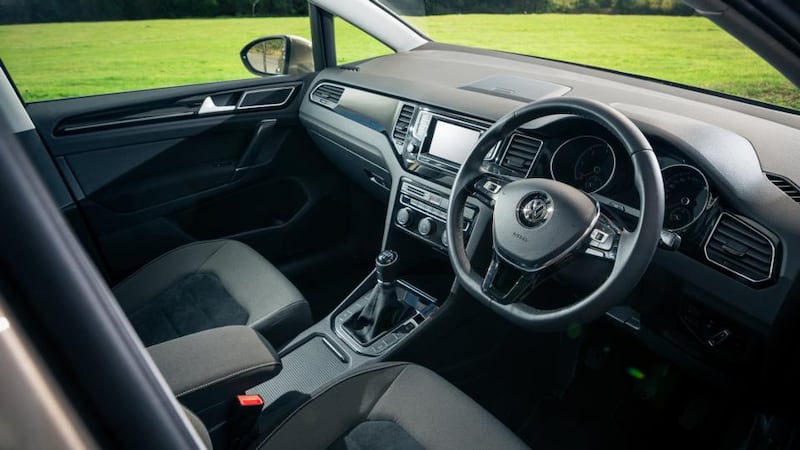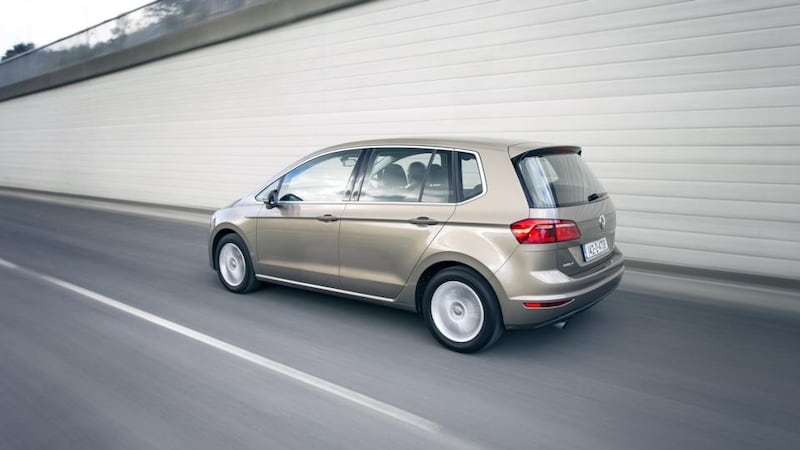I think the problem starts with calling it a Golf. You see, whatever you may think of the Volkswagen Golf, it is undeniably a very well-crafted, slickly-marketed product and when you apply the Golf name to anything automotive, you are setting up a series of expectations that must be met.
So it must be classy (yet classless), sporty (yet comfy), practical (yet desirable). These are the attributes that VW has been oh-so-carefully layering into the Golf recipe since the 1974 original. It has reached an apogee in the current MkVII Golf, which even in relatively basic form has you thinking rather more of Mercedes than of Ford when it comes to rivals.
The blot on the Golf’s family tree though is the Golf Plus. A spin-off from the MkV Golf, the Golf Plus was slightly taller, slightly more spacious and a heck of a lot more dumpy. A clever marketing campaign helped it to post decent enough unit sales but it was always the unloved cousin of the Golf family.


The lack of a desirable image for the Golf Plus hasn’t stopped VW having another crack at the concept though (because if a Golf is good then more Golf must be brilliant, right?) and so we have this, the Golf SV (the SV standing, roughly, for Sport Van). Like the current Golf and like almost all recently introduced VW Group products, underneath you will find the MQB platform – a mix of oily and electrical bits and pieces that can be split and recombined as a Golf, an A3, an Octavia, a Passat and so on.
Here in the SV, the inherent versatility of MQB is really shown off, as although this is clearly mechanically and visually related to a Golf, it’s much, much larger. In fact, the SV is 134mm longer than the old Golf Plus, and 84mm longer than the current Golf hatchback.
More room
Its wheelbase is also greater – 48mm longer than the hatch’s which leads (along with the higher, more upright driving position) to some seriously spacious rear seats. Crucially, thanks to the SV being 81mm wider than the Golf hatch, there’s also more room across the back seats, meaning you should (just) be able to squeeze in three child car seats abreast; a serious consideration for growing families. Equally useful is a boot volume of 500 litres that expands to 590 litres if you slide those rear seats forward.
The good news is that in spite of all this space and all this practicality, the SV actually disguises its proportions and its bulk quite well. It takes the crisply-defined styling of the current Golf idiom and expands it out and up into a perfectly pleasant shape. Okay, so no big monobox MPV is ever going to be described as sexy or exciting, but as these things go, the SV is perfectly pleasant to the eye.
That’s true inside too. Like the exterior, the cabin can best be described as the family Golf layout, just taller and a bit wider. You sit, perched up slightly, on big, comfy seats which on our Highline model come with lovely, soft Alcantara inserts as standard. The three-spoke steering wheel – excitingly skeletal in its design and festooned with buttons in the manner of an F1 car – is delightful to hold and to twirl and the usual Golf refinements of soft-touch plastics and a high-tech touchscreen infotainment system are all present and correct.
Our test car ran the 1.6-litre 110bhp diesel engine which was fine in and of itself, and very economical but a slight lack of grunt and the broad spacing of ratios in its five-speed manual gearbox meant the SV could feel a little out of breath at times. Co2 emissions of 101g/km at least mean you won’t have to break the bank to tax it, but with a full load of passengers and luggage on board, the SV could occasionally feel under-powered.
Of all the MQB-based cars we’ve tested thus far, the SV is the one that suppresses tyre roar the best. It seems to be an odd trait of MQB cars that they do seem to transmit a lot of road noise into the cabin (and the Audi A3 is the very worst in this regard) but the SV kept things quelled. Engine refinement is good too, so as long as you’re not asking for blistering acceleration, all is well when behind the wheel.
Well, almost. The SV suffers from an annoying steering trait of having a slight inconsistency of feel and response just off the straight-ahead position. It’s a common failing of electrically-boosted power steering systems, but we’ve never previously experienced it in the Golf hatch.
Steering feel
Now, I know that cribbing about steering feel in a family car sounds like the worst whinging of a horse-power-addled road tester, but the sensation causes problems – specifically, it saps the drivers’ confidence in nip-and-tuck manoeuvres such as threading through traffic or lane-keeping on a dark and busy motorway.
And that’s where the SV does let the side down. It just fails to feel quite slick and sophisticated enough to be a proper Golf. If VW had called it the Touran and simply spun off next-year’s new seven-seater as part of the SV model range, then the complaint would be much less serious; you don’t expect a Touran to feel brilliant to drive. You do expect it of a Golf, however.
So while the SV is impressively spacious, well-made, economical and even quite handsome, it just doesn't quite live up to the Golf name. The lowdown: VW Golf SV 1.6 TDI Highline
Power: 110hp
Torque: 250Nm
0-100kmh: 11.3sec
Top speed: 192kmh
Claimed economy: 3.9l/100km. (72.4mpg)
C02 emissions: 101g/km
Motor tax: €190
Price: €31,102 as tested. SV versions starts at €23,605











